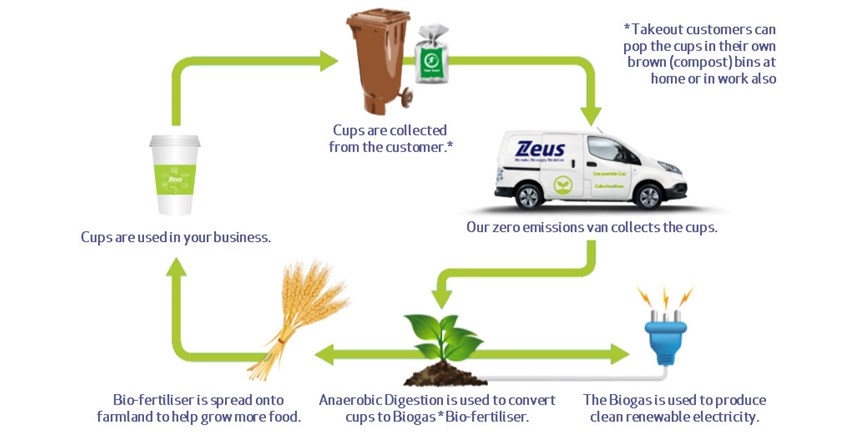The importance of Closing the Loop on Compostable Packaging
Published date: 11/03/2019 09:27

When you think of biodegradable and compostable packaging options, you think of an all natural process. Fully compostable is organic and should be thought of in the same light as plants, whole food waste or other vegetation. This line of thinking is one reason why it's useful to establish a connection between compostable lifecycle and nature.
In nature, taking the forests as an example, there is a zero waste life cycle. When there is no interference from the outside world, what's growing now will remain a part of the forest. A branch falls off a tree and naturally decomposes over time until it becomes part of the soil. The soil, mixed with naturally-occurring seeds will create new trees and new branches until the cycle starts over. In the same way, an acorn falling from a tree will either be involved in the creation of new trees or feed animals and wind up being excreted naturally on the forest floor.
These examples of "zero waste life cycle" demonstrate the same system used in the compostable food packaging supply chain. This system mimics nature in what is called a "closed loop system".
What is a Closed Loop System?
A closed loop system is one in which every component is recirculated within the system for as long as possible.
Let's use the example of compostable coffee cups. In a closed loop system compostable coffee cups are made with naturally occuring plant based raw materials such as sugar cane fibre or the residue collected from sugar cane production. These compostable coffee cups could be used in cafés, either on premise or off premise.
Once used, the compostable coffee cups are collected and grouped together. They are then composted properly and used in the production of sugar cane. The sugar from the sugar cane is used for one obvious purpose (to make sugar). However, the residue from the sugar cane also goes right back into compostable packaging's closed loop system. The full system can be viewed in full in the image below.
Who Is Involved in Closing The Loop?
There are a few parties involved in a successful closed loop system. The manufacturers, who produce natural, fully compostable products made from compostable materials (let's stick with the image of certified compostable coffee cups). Then there are the intermediaries or businesses, i.e. the coffee shops from our example earlier, who make the responsible decision to use compostable items.
Then there are the customers, who are told that the coffee cup they are using is fully compostable. It is up to the stores to urge their customers to bring the cups back or dispose of them responsibly themselves in their own compost bin. Then there are the collectors, who take the used products back to be decomposed of in the correct way.
All parties are involved in turning the compostable coffee cups into compost and the life cycle continues in perpetual motion.
The Importance of Closing The Loop with Compostable Packing
Making the decision to use compostable packaging is a great decision and an environmentally responsible one at that. Sustainable packaging design provides a great alternative to single use plastic packaging, recycled plastics and other non-eco friendly packaging whilst also reducing one's carbon footprint. However, unless this compostable packaging is disposed of properly and is allowed to break down into nutrient rich soil, the loop doesn't get closed. Throwing compostable packaging into general waste disposal is not a closed loop system, it is a linear system. The packaging will eventually enter a landfill where it will be disposed of in a way that is less efficient than the standard 180 day compostable lifecycle. Ensuring that your compostable packaging remains in the closed loop system is arguably the most important part of all.
As with all forms of environmentally conscious recycling, it is knowledge and commitment that are the vital components of success. First of all there is the commitment to use compostable packaging and dispose of it correctly. Then there is the need to inform your users that they are using compostable packaging. This can even be done with a gesture as simple as having a sign in-store.
Compostable or biodegradable packaging is not the only material that operates in closed loop system. The same goes for dry recyclables, glass bottles and even the disposal of food. Using eco-friendly materials is important but what's more important, is closing the loop. The success of your compostable recycling depends on it.


